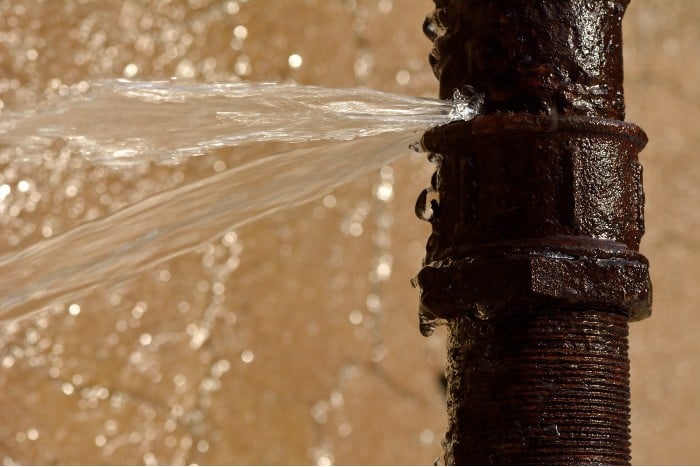Six Reasons Behind Common Water Leaks in Homes and How to Fix Them
Six Reasons Behind Common Water Leaks in Homes and How to Fix Them
Blog Article
What're your insights and beliefs about Common Water Leaks In House?
/GettyImages-957479686-f3d2e677f2e749fc98aa207b474c5c1f.jpg)
Leakages not just create waste of water but can likewise trigger unnecessary damage to your home and advertise undesirable organic growth. Unfortunately, water leaks could go undetected considering that the majority of the pipework in our residence is concealed. By comprehending and looking for everyday scenarios that trigger leakages, you can protect your residence from future leaks and also unnecessary damages. Today, we will certainly look at six leakage causes that might be triggering your pipelines to leak.
Elbowing in roots
The majority of water leaks begin outside the house instead of inside it. If you notice an abrupt reduction in water stress, say in your tap, require time to go out as well as analyze your backyard. You could notice wet spots or sinkholes in your backyard, and that may suggest that tree origins are invading water lines triggering water to permeate out. You can have your plumber check for invasion, especially if you have trees or hedges near your residential property.
Corroded water systems
This might be the cause of staining or bending on your water pipelines. If our plumbing system is old, consider replacing the pipelines since they are at a higher risk of rust than the newer designs.
Faulty Pipeline Joints
The point at which your pipes connect is frequently the weakest link in the waterline. Pipe joints can weaken gradually, causing water leakages. However, most of pipeline joints are not quickly visible. If you have noisy pipes that make ticking or banging sounds, specifically when the warm water is switched on, your pipeline joints are most likely under a lot of pressure. It is advisable to have your plumber inspect your system annually.
Instantaneous temperature level modifications.
Extreme temperature modifications in our pipes can cause them to increase as well as get suddenly. This expansion as well as contraction might trigger cracks in the pipelines, especially if the temperature level are below cold.
Poor Water Connectors
At times, a leakage can be triggered by loosened hose pipes and also pipes that provide your appliances. More often than not, changing is what triggers the loosened water Connections. You may find when it comes to a cleaning device, a hose pipe might spring a leak because of drinking during the spin cycle. In case of a water links leak, you may see water running directly from the supply line or pools around your home appliances.
Clogged Drains
Clogged drains may be aggravating as well as inconveniencing, however they can sometimes end up causing an overflow causing break pipes. Maintain removing any type of products that may go down your drains pipes that might obstruct them to avoid such troubles.
All the above are sources of leakages however not all water leakages arise from plumbing leaks; some leaks could come from roofing leaks. All leakages ought to be fixed quickly to avoid water damage.
Leakages not only cause waste of water but can likewise trigger unnecessary damage to your house as well as advertise undesirable natural development. By looking as well as comprehending for daily circumstances that cause leakages, you can shield your house from future leaks and also unneeded damage. Today, we will look at six leak causes that might be creating your pipelines to trickle.
At times, a leak can be caused by loosened hose pipes and also pipelines that provide your devices. In situation of a water links leak, you may discover water running straight from the supply line or puddles around your home appliances.
How To Check For Water Leak In Your Home
How To Check for Leaks
The average household's leaks can account for nearly 10,000 gallons of water wasted every year and ten percent of homes have leaks that waste 90 gallons or more per day. Common types of leaks found in the home are worn toilet flappers, dripping faucets, and other leaking valves. These types of leaks are often easy to fix, requiring only a few tools and hardware that can pay for themselves in water savings. Fixing easily corrected household water leaks can save homeowners about 10 percent on their water bills.
To check for leaks in your home, you first need to determine whether you're wasting water and then identify the source of the leak. Here are some tips for finding leaks:
Take a look at your water usage during a colder month, such as January or February. If a family of four exceeds 12,000 gallons per month, there are serious leaks.
Check your water meter before and after a two-hour period when no water is being used. If the meter changes at all, you probably have a leak.
Identify toilet leaks by placing a drop of food coloring in the toilet tank. If any color shows up in the bowl after 10 minutes, you have a leak. (Be sure to flush immediately after the experiment to avoid staining the tank.)
Examine faucet gaskets and pipe fittings for any water on the outside of the pipe to check for surface leaks.
Undetected water leaks can happen without the home or business owner even realizing. If you suspect a water leak, but not able to find the source. It is time to contact a professional water leak detection service, The Leak Doctor.
How To Find a Water Leak In Your Home
https://www.leakdoctor.com/blog/How-To-Check-For-Water-Leak-In-Your-Home_AE197.html

Do you like reading up on How to detect water leaks in your home? Give a comment directly below. We would be glad to know your responses about this blog posting. We are looking forward that you come back again later on. Are you aware of somebody who is excited about the subject? Do not hesitate to promote it. We treasure reading our article about Common Water Leaks In House.
Click Here Report this page